Austin | While solar cells lose 25 percent of their efficiency in hot temperatures, liquid crystals in LCD displays can be irreparably damaged at temperatures above 55 degrees Celsius. A challenge for digital signage – not only in Texas, where the mercury rises above 30 degrees Celsius in the shade on over 100 days a year. invidis inspected more than 100 screens around the state, two thirds of which were damaged in one form or another.
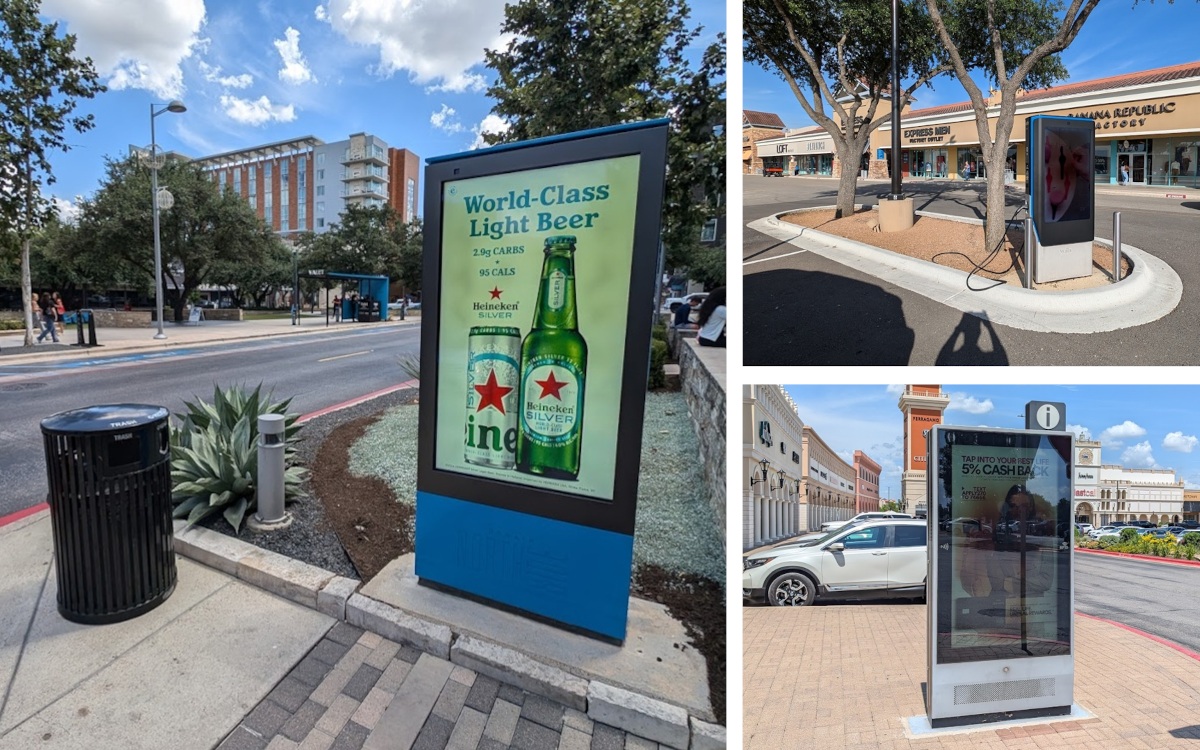
Outdoor Screens: Hotter than Specified
invidis went out and about in the summer heat of Texas – to Houston, San Antonio and Austin – to inspect outdoor screens and find best practice cases. Whether DooH in the parking lot, roadside smart city totems, EV-DooH charging stations or drive thru order displays – operating screens in direct sunlight is digital signage at its extreme.
LCD-based outdoor displays are among the most demanding digital signage applications. In order to be fully visible even in direct sunlight, very bright LCD panels up to ten times brighter than normal indoor screens are recquired. Or to phrase it more precisely: it’s the backlight that’s brighter because an LCD panel does not emit light itself. However, higher brightness also comes with much higher heat emissions, that need to be channelled out of the totem, bypassing the front and the back of the LCD panel.
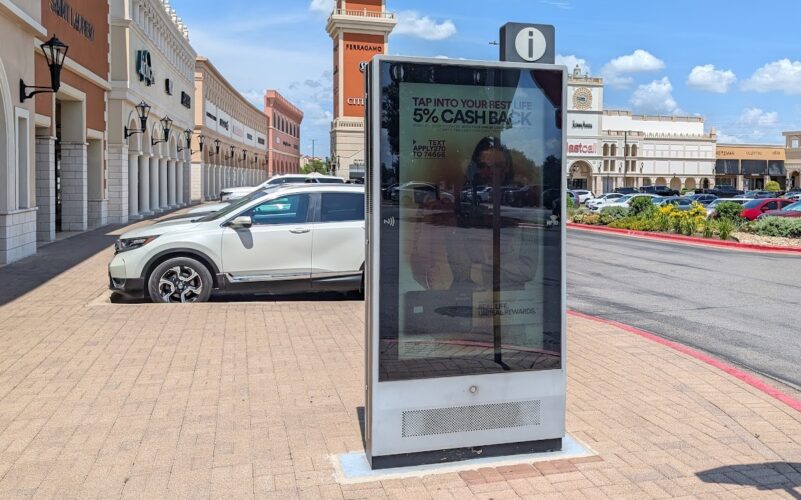

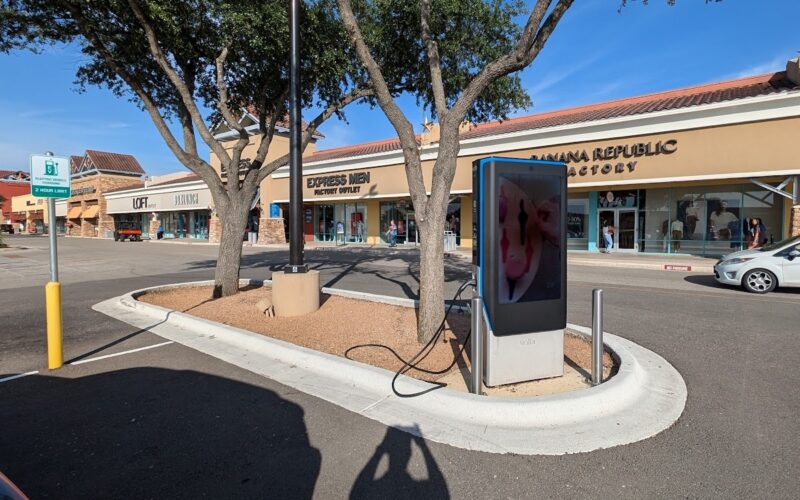
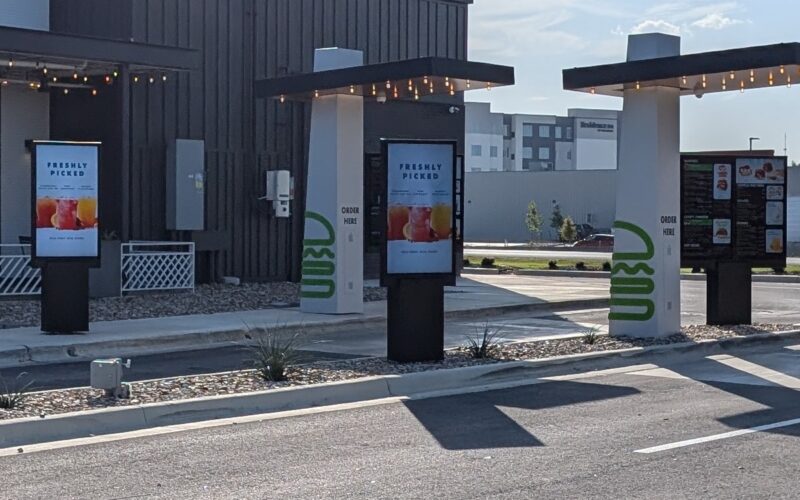
Heat is the number one screen killer
Heat poses the greatest danger to LCD displays, whether it’s self-emitted heat from the LCD backlight or external heat from direct sunlight.
Under normal circumstances – with active cooling in the housing, regular maintenance, and a location without direct sunlight – outdoor displays can be operated for many years without damage. But the reality not only in Texas is often different. DooH totems, digital signage store directories, and drive-thru screens are often exposed to direct sunlight for several hours a day. Temperatures on the screen surface can reach 85 degrees Celsius and more at an air temperature of 35 degrees in the shade – far beyond the manufacturers’ specifications.
Digital signage integrators, totem designers, network operators, and media owners try to blow the heat out of the housing with sophisticated technical design, heat exchangers, and complex ventilation (direct air cooling). Properly removing the heat from inside the housings require a lot of energy and generate quite some noise. All-in-one outdoor solution manufacturers like Dynascan provide optimized digital signage and DooH totems that are considerably more efficient than solutions built by less experienced integrators.
For extreme use-cases, some outdoor display manufacturers also offer air-conditioned solutions where AC energy consumption can even exceed the power consumption of the high-brightness screen.
Active ventilation and recurring onsite maintenance is an indispensable concept for outdoor signage, even if that means that outdoor solutions are still far away from green signage. The most important tip: avoid screen locations with direct sunlight.
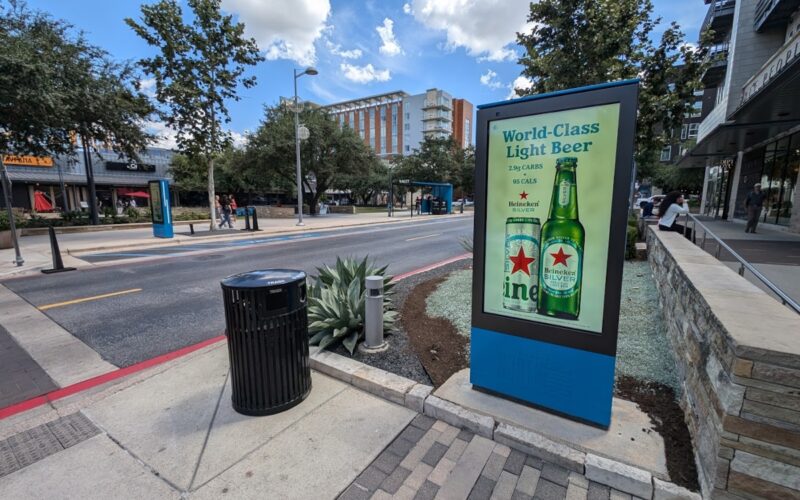
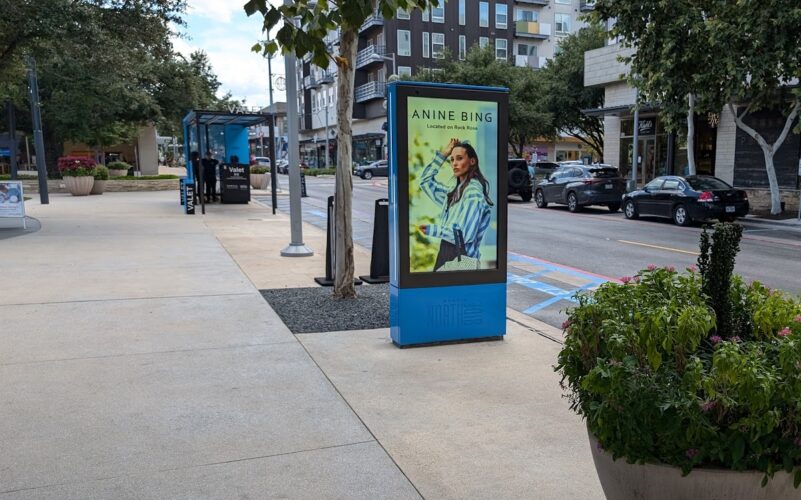
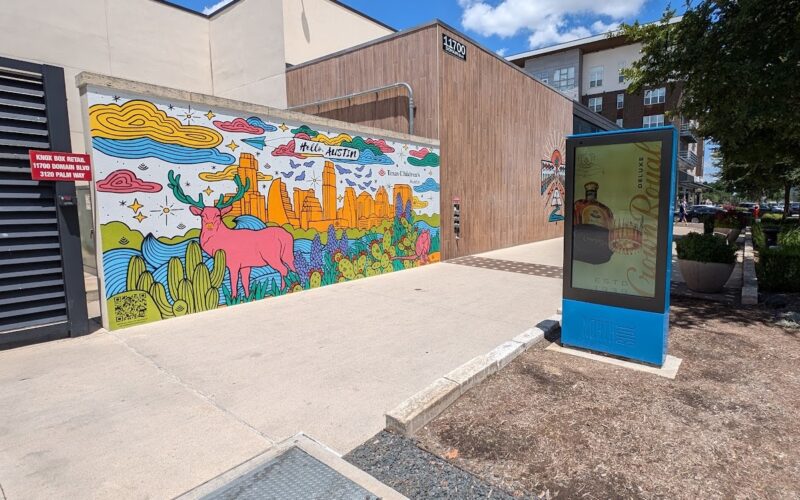
Reality check – more than 2/3 of screens are damaged
In addition to the extreme heat, the climate in the sunbelt (Texas, New Mexico, Arizona and Nevada) also brings a lot of dust and sand. Digital signage installations must be regularly serviced and cleaned to enable efficient ventilation. Unfortunately, many mall operators and QSR chains only focus on installation costs (CAPEX); regular, preventive service is often cut back on in order to minimize recurring costs. The result: outdoor housings are not cleaned regularly and damaged screens remain undetected for too long. In short, many screens are in a poor condition.
A large proportion of the 100+ screens inspected by invidis exposed to regular direct sunlight – the selection was not representative – show discoloration aka a yellow tint. More than a third of all inspected screens also show brown spots, and twelve displays had so many black liquid crystal spots, that they would need to be replaced immediately. Clear signs of heat build-up and inadequate cooling. The liquid crystals of LCDs are very sensitive to heat, just like electronics. Once damaged, screens can no longer be repaired and must be replaced.
UV protective glass and UV films
Experienced integrators protect outdoor LCD displays with UV protective glass or film. Laminated safety glass, a good quality PVB interlayer also acts as UV block, doesn’t require an additional UV film. However, most kiosks inspected in shopping centers use a single layer glass missing the UV film.
While UV is bad for electronics and will also yellow optical films, it does not block the solar heat that comes from IR (infrared) emission. Anti-IR glass is much more complicated and costly. But the films significantly limit the viewing angle and rob the screen of brightness that is so valuable when used outdoors. For touchscreens – such as those used in open-air shopping malls and kiosk use cases – an additional UV protection layer cannot be used at all..
Further Articles:
- How Displays live longer
- The Cleaning power of Advertising
- Behind the Scenes: The Outdoor Experts
- LG Outdoor screens with Sunburn Protection
Sufficient shade and professional outdoor solutions are necessary
Reliable outdoor totems and kiosk concepts require experts who are experienced in planning the technical design, ventilation and service. Integrating a high-brightness screen into a simple housing is usually not sufficient. But foremost outdoor signage should be positioned in permanent shade if possible, which also drastically improves readability.
Large QSR chains are already using shade-providing architecture like canopies above the displays. Most outdoor shopping centers, DooH networks and EV-DooH providers are still unfamiliar with the shade requirements.
Another challenge – unrelated to heat – are soot particles from car exhaust fumes and road salt in colder climes. Especially Drive-thru installations are suffering from blocked filters and corrosion.
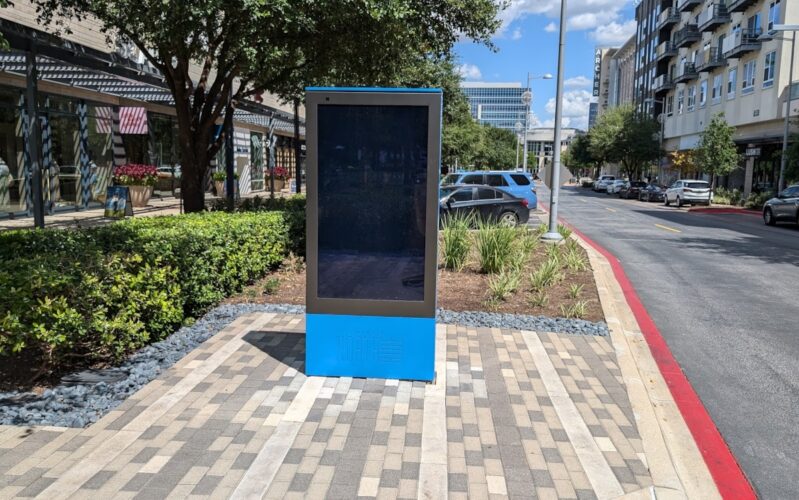
Cooling, even when the screens are not running
We were surprised to discover a few outdoor totems with active cooling, even the screens weren’t running yet. We talked to one of the US’ most experienced outdoor digital signage integrator and he gave us a hint. As soon as LCD displays are installed – regardless of the fact that the screens are operating – active cooling is urgently needed. Liquid crystals can be damaged by external heat even when the screens are switched off.
The large number of damaged displays we discovered in Texas can probably be explained by precisely this reason. During the pandemic, when stores remained closed, digital signage and DooH totems were simply switched off and not ventilated for several months. A lack of knowledge on the part of retailers and mall operators has therefore probably damaged a large part of the display fleet.
Outdoor Signage Best Practice
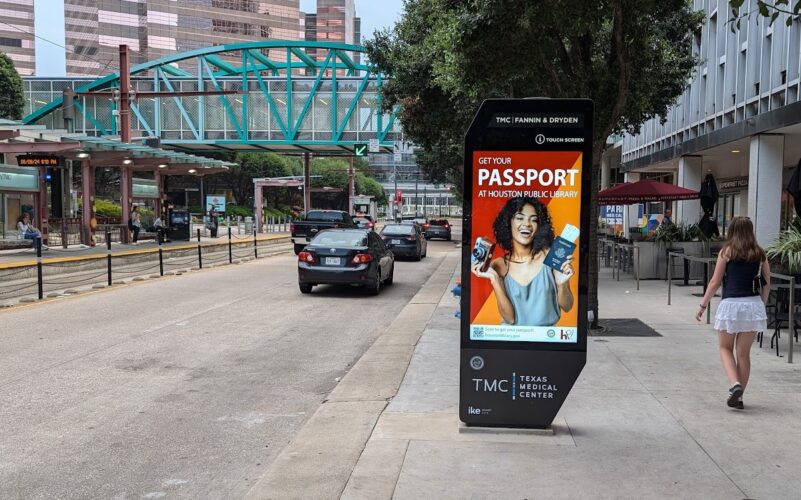
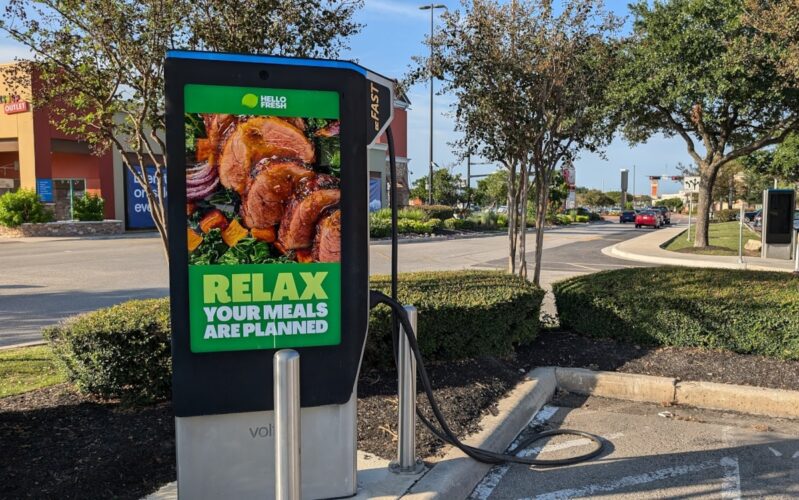
Remote device management has limits
Remote device management is essential for digital signage – whether indoor or outdoor. Especially capital-intensive outdoor installations should be continuously monitored. In particular, to operate the screens within the manufacturer’s specifications and keeping warranty.
Unfortunately, screen discoloration and screen damage can only be identified with visual checks on site, just as cleaning the housings require regular on-site service calls. We couldn’t find any damaged displays on Smart City kiosks and EV DooH charging points. Our guess: both DooH networks and EV charging network operators regularly service the outdoor touchpoints on site and rely on professional outdoor design, hardware suitable for extreme use and sufficient ventilation concepts.
What’s next?
The industry needs to educate end-users about the challenges of outdoor screens in direct sunlight locations and the importance of regular on-site service. It doesn’t come cheap but replacing screens early or operating damaged or not readable screens incurs even higher costs in the long-term.
Notice: invidis has decided not to publish the list with individual results of the non-representative site visits. Inadequate location, missing service and cleaning concepts as well as under-dimensioned ventilation are the root-cause for damaged screens. But two out of three screens with discoloration or even visibly damaged is unacceptable for mostly business critical digital touch points.
- ISE 2026: “Spark” Launches as a New Showcase for the Creative Industries
- M-Cube: “Digital Signage Touches Hearts and Moves Wallets”
- Over 700 Stores: Stratacache Rolls Out Retail Media Network for Iceland Foods
- Germany: DooH Market Surges Over 25% in 2025
- Year in Review 2025/2026: Pontus Meijer | Visual Art

